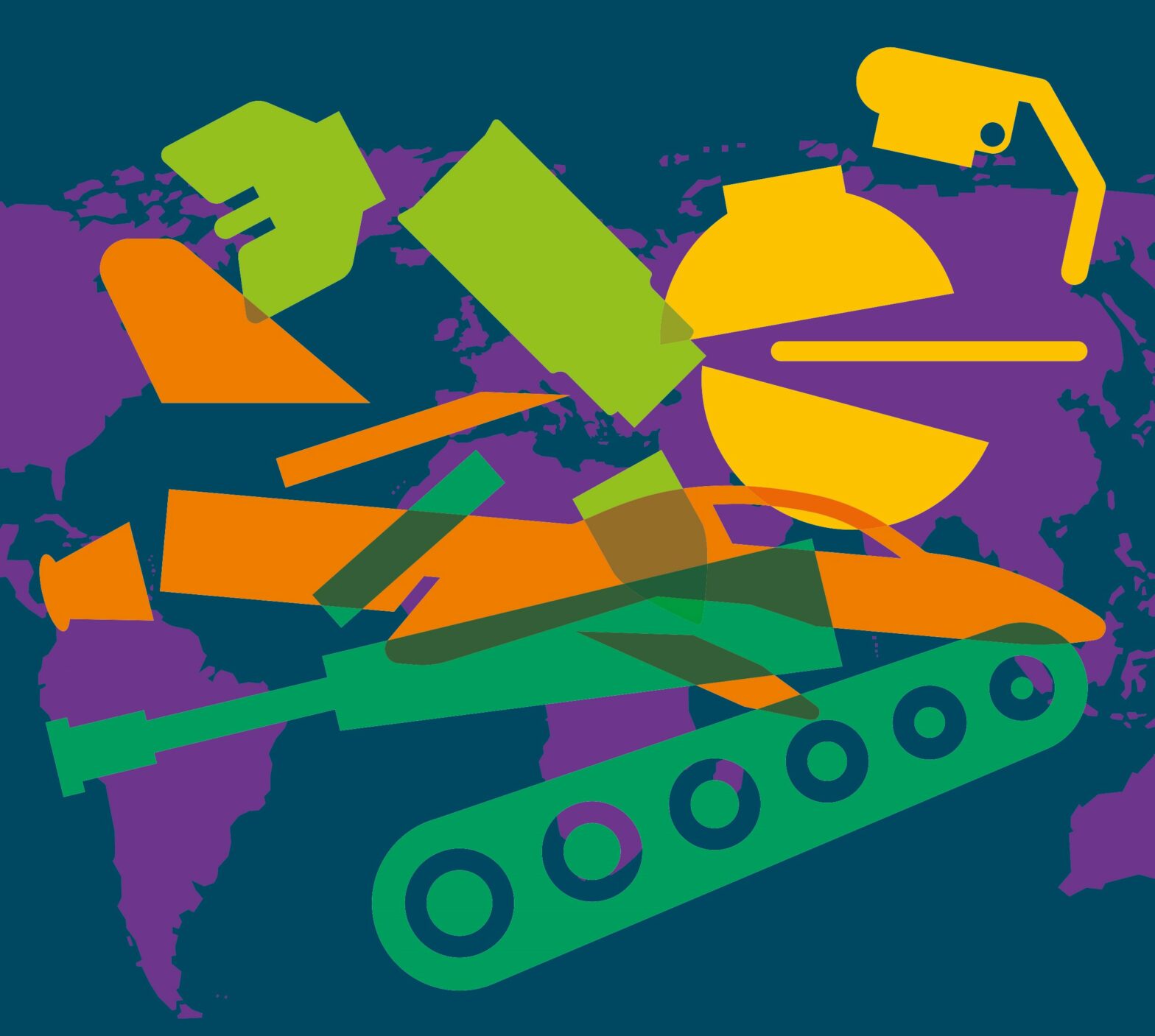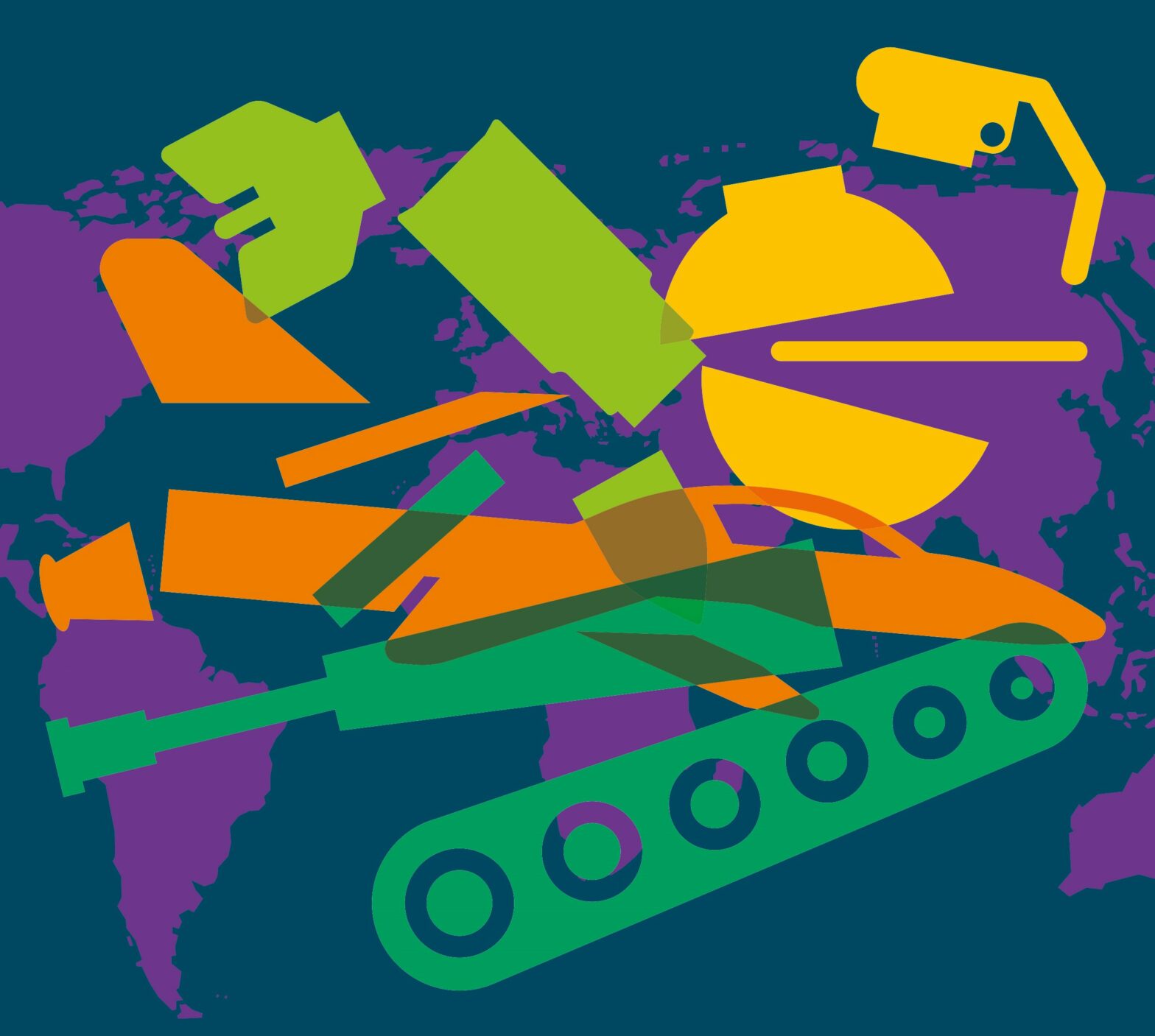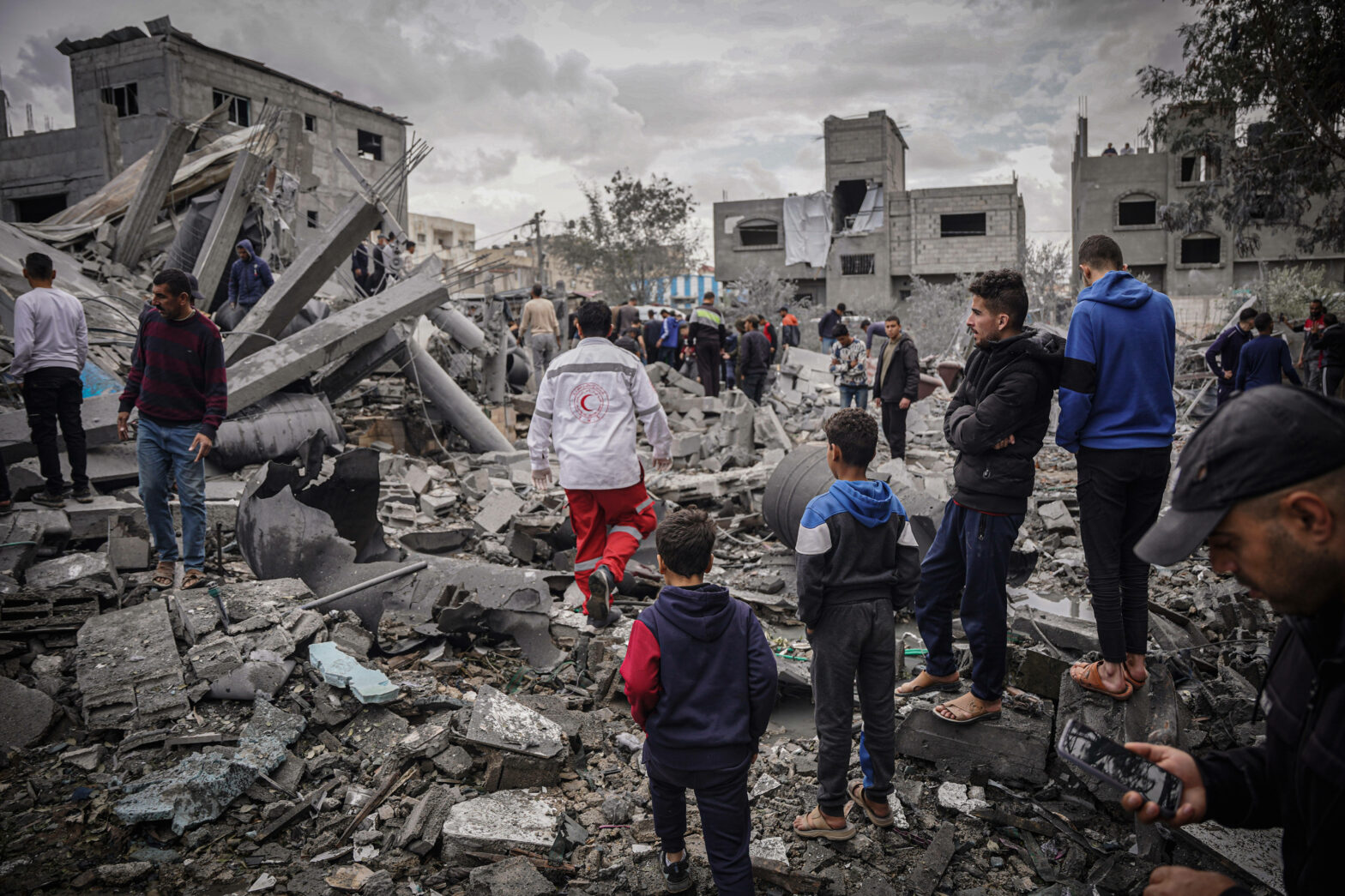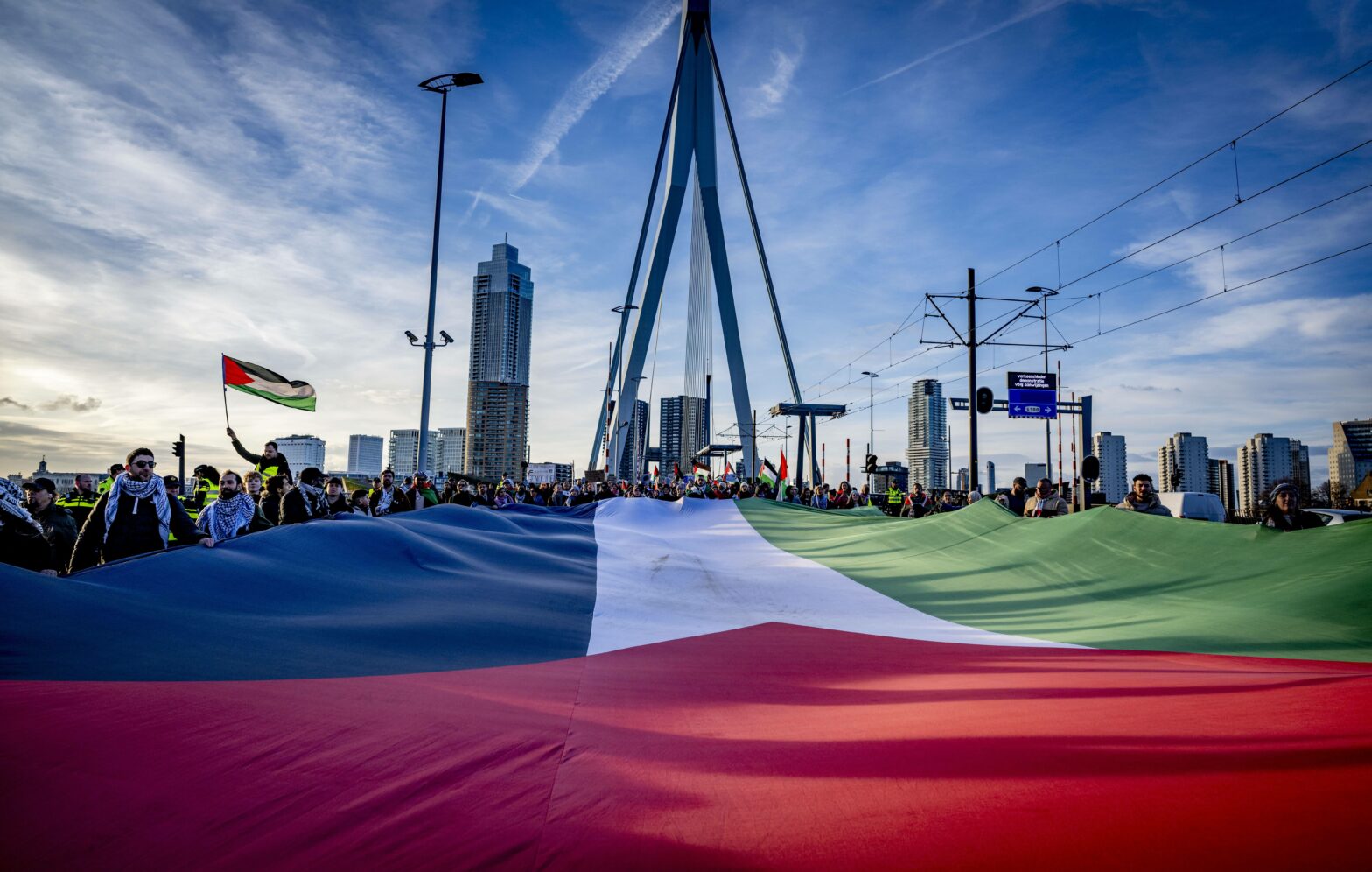Share Twitter Facebook Email Copy URL
Peace is more than just the absence of war. Far from being the result of direct action, violent conflicts frequently have indirect and structural causes such as poverty, hunger, political discrimination or social inequality.
The term ‘positive peace’ takes these aspects into account and seeks to create a state in which not only direct violence no longer exists, but in which indirect and structural forms of violence are also eliminated preventively and sustainably. Our current times are seeing security redefined ever more as the absence of military conflict and military confrontation and war once again being seen as tried and tested means of conflict resolution. Therefore, in the face of a barbaric war of aggression against Ukraine, global rearmament (SIPRI 2022) and new paths leading towards confrontation by the major powers, it may sound idealistic, even naïve, to speak of ‘positive peace’. Yet since efforts to date to resolve the many social, ecological and socio-political problems of the present have had little success and since hopelessness is spreading as to whether there are still ways out or whether a new world war is on the horizon, it is all the more essential that we take up and further develop our approaches to peace policy. It is, after all, clear that the manifold crises of the present cannot be overcome by employing approaches that assume that the future is a continuation of the present. Rather, what we need is imagination and unconventional thinking that will allow us to come up with new ways of solving problems. And that also requires different approaches to analysis and definition.
The concept of ‘positive peace’ was developed by Johan Galtung, a Norwegian mathematician and the principal founder of the discipline of peace and conflict studies. He distinguishes between ‘negative peace’, i.e. the absence of physical violence, and ‘positive peace’ that is a just and in every respect desirable state (Galtung 1971a). The result is the distinction between peace as a goal vs. peace as a process: while ‘negative peace’ is a state defined by the absence of war, ‘positive peace’ is defined as a dynamic process in the sense of a productive creation of more just socio-economic and political conditions – or, conversely, as the elimination of the causes of such a potential outbreak of violence by ‘positively’ shaping and regulating relations.
The distinction is based on a differentiated extension of the concept of violence to include any negative consequences of social, political and economic conditions and relationships (cf. Balibar 2001). The cause of violent conflicts and wars often lies in ‘structural violence’ (Galtung 1971 [1969], 1975; Senghaas 1987), in social, political and economic conditions and relations, or more precisely: in forms of exploitation, oppression, racism and sexism, unequal educational conditions, huge wealth and abject poverty, ecological destruction, etc. ‘Positive peace’ means not only thinking about peace when the baby has already been thrown out with the bath water. Conflicts usually only receive attention once they have turned violent. They are then often put down as religious, ethnic or purely geopolitical or regional conflicts. Conflicts are, however, frequently already bubbling under the surface long before they turn openly violent. These usually start as conflicts over distribution or liberation before moving on to being fought out along confessional or ethno-regional borders and at an international and regional level. Critical conflict analyses must therefore look into the causes. They need to examine the various parties and their respective interests: domestic and international as well as those who benefit just as much as those who suffer under the consequences.
To accommodate this analysis, Galtung further developed the understanding of violence as a situation that is essentially characterised by two parties that are in conflict with one another. According to this new definition, violence is built into a structure in such a way that no one seems to be directly harming the other. In this context, Galtung points out that the two terms can follow each other or be used in a targeted manner. In colonialism, for example, ‘direct violence’ was used to establish ‘structural violence’ which sooner or later led to direct counter-violence in the form of oppression and alienation, as seen in the anti-imperialist liberation movements of the 20th century (Galtung 1971b).
Conflict analysis is followed by the question of conflict transformation, i.e. peace policy. For conflicts as diverse as those in Mali, South Sudan, Syria or Ukraine, a one-size-fits-all-solution rarely exists. At the same time, there are guidelines for a left-leaning ‘peace policy by peaceful means’ (Galtung 2007). Left-leaning conflict transformation aims at de-escalating the ongoing violent conflict and relies on the forces of non-violence on the ground. It can, however, also mean an escalation at the sources of conflicts, e.g., with issues like the demand for resources among transnational corporations or arms exports from Germany to crisis and war zones. Conflict transformation measures are therefore not aimed at preventing the emergence of conflict, but at a peaceful transformation with the aim of abolishing and outlawing war as a means of intra- and inter-societal conflict resolution. The hope for a progressive repression of the violent settlement of social conditions is based, among other things, on the fact that the use of violence becomes dysfunctional in the course of the process of civilisation. Galtung understands peace as a ‘multi-level process’, which means it is not only a matter for states and governments, a question of avoiding war and disarmament, but rather: it is a responsibility for society as a whole, it has a decisive bearing on people’s living conditions. In this sense, ‘positive peace’ under capitalist conditions is a regulative idea for conflict prevention in the sense of a peace policy by peaceful means and at the same time a mandate for a comprehensive social – socialist – transformation, that in turn causes the ‘civilisation of revolution’ (Balibar 2001, 1307) itself without spreading new violence and terror.
Eva Wuchold is the Programme Director for Social Rights at the Rosa Luxemburg Foundation’s Geneva office. Previously, she coordinated worldwide projects on peace policy, climate, environment and food sovereignty.
REFERENCES
Balibar, Etienne, 2001: Gewalt, in: Historisch-kritisches Wörterbuch des Marxismus, Ed. 5, 693-96 and 1270-308
Galtung, Johan, 1967: Theories of Peace. A Synthetic Approach to Peace Thinking, International Peace Research Institute, Oslo
ibid,, 1971 [1969]: Gewalt, Frieden und Friedensforschung, in: Senghaas, Dieter (ed.), Kritische Friedensforschung, Frankfurt a. M., 55–104
ibid., 1971a: Friedensforschung. Vergangenheitserfahrung und Zukunftsperspektiven, in: ibid., Strukturelle Gewalt, Reinbek 1975
ibid., 1971b: A Structural Theory of Imperialism, in: Journal of Peace Research 2/1971, 81-117
ibid,, 1975: Strukturelle Gewalt. Beiträge zur Friedens- und Konfliktforschung, Reinbek
ibid., 2007: Frieden mit friedlichen Mitteln: Friede und Konflikt, Entwicklung und Kultur, Münster
Senghaas, Dieter (ed.), 1987: Imperialismus und strukturelle Gewalt. Analysen über abhängige Reproduktion, Frankfurt a. M.
SIPRI – Stockholm International Peace Research Institute (ed.), 2022: Trends in World Military Expenditure, Solna
This article first appeared in the Rosa Luxemburg Foundation’s ABC of Transformation https://zeitschrift-luxemburg.de/abc/positiver-frieden/



